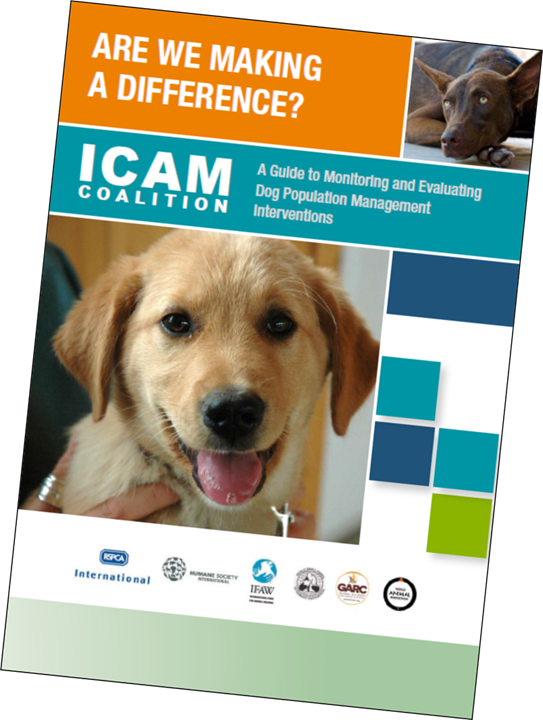 For those who feel brave enough to ask the question, how do we find the answer? This is something we at the ICAM Coalition found ourselves struggling with. The coalition was formed in 2006, and is comprised of some of the largest international animal welfare charities that work and fund humane companion animal management interventions. Our aim is to share our experiences and learn from each other. But what interventions and practices work best and in what contexts? We are acutely aware that not all dog populations are the same and hence interventions must vary to suit the dogs and local ownership practices, so we needed impact assessments (investigations into whether changes have occurred as a result of an intervention or policy) from a range of locations.
For those who feel brave enough to ask the question, how do we find the answer? This is something we at the ICAM Coalition found ourselves struggling with. The coalition was formed in 2006, and is comprised of some of the largest international animal welfare charities that work and fund humane companion animal management interventions. Our aim is to share our experiences and learn from each other. But what interventions and practices work best and in what contexts? We are acutely aware that not all dog populations are the same and hence interventions must vary to suit the dogs and local ownership practices, so we needed impact assessments (investigations into whether changes have occurred as a result of an intervention or policy) from a range of locations.
So far, our field of humane DPM has been slow to assess impact in scientific and objective ways. The result has been a lot of anecdotes and passionate believers, probably many of them are right - but without proof how can other stakeholders be sure? Perhaps this is also one of the reasons why our advocacy efforts have floundered? But there have been notable exceptions to this, innovators of impact assessment that have diligently collected data for many years, such as Help In Suffering in Jaipur, India, who have monitored changes in street dog density, human rabies cases and dog bites for the last nearly two decades (Reece & Chawla 2006; Reece et al. 2013).
We felt inspired by innovators in the dog world as well as examples from working equine and farm animal welfare projects, plus there is a wealth of impact assessment expertise in human development. Hence we invested in developing our most recent guidance; 'Are we making a difference? A guide to monitoring and evaluating dog population management interventions'. The guidance provides detailed descriptions of potential indicators (measurable signs that change is happening) plus cost-effective ways of measuring these indicators. Some of these indicators are termed ‘recommended’ because they have been successfully used, at least once, to assess a DPM intervention. Others are described as ‘suggested’ because although they have been used in other species or contexts, they are yet to be tested within DPM.
The full PDF document is long, as it had to include all the impacts that interventions around the world are aiming for, but most of us only have a few impacts in mind. So there is also an online investigation tool which asks a series of short questions about your dogs and your intervention and creates a tailored document based on the answers. The result is much shorter and bespoke guidance. There are also a couple of tools available to help you learn and test yourself on body condition scoring, one of the recommended indicators of dog welfare.
It’s important to recognise that this guidance is neither a set of rules nor a gold standard. We have collated the ‘best yet’ practice into a range of meaningful indicators and affordable methods of measurement. We hope that you will feel inspired to give impact assessment a try and to make further innovations. We would value hearing your feedback and experiences, so please do contact us on This email address is being protected from spambots. You need JavaScript enabled to view it. with any thoughts or suggestions. Together we can strengthen our effectiveness and the evidence-base behind our interventions and make this world a better place for dogs and people alike.
References
Reece, J.F. & Chawla, S.K., 2006. Control of rabies in Jaipur, India, by the sterilisation and vaccination of neighbourhood dogs. Veterinary Record, 159, pp.379–383. Abstract available at: http://www.ncbi.nlm.nih.gov/pubmed/16980523
Reece, J.F., Chawla, S.K. & Hiby, A.R., 2013. Decline in human dog-bite cases during a street dog sterilisation programme in Jaipur, India. The Veterinary record, 172(18), p.473. Abstract available at: http://www.ncbi.nlm.nih.gov/pubmed/23492927
